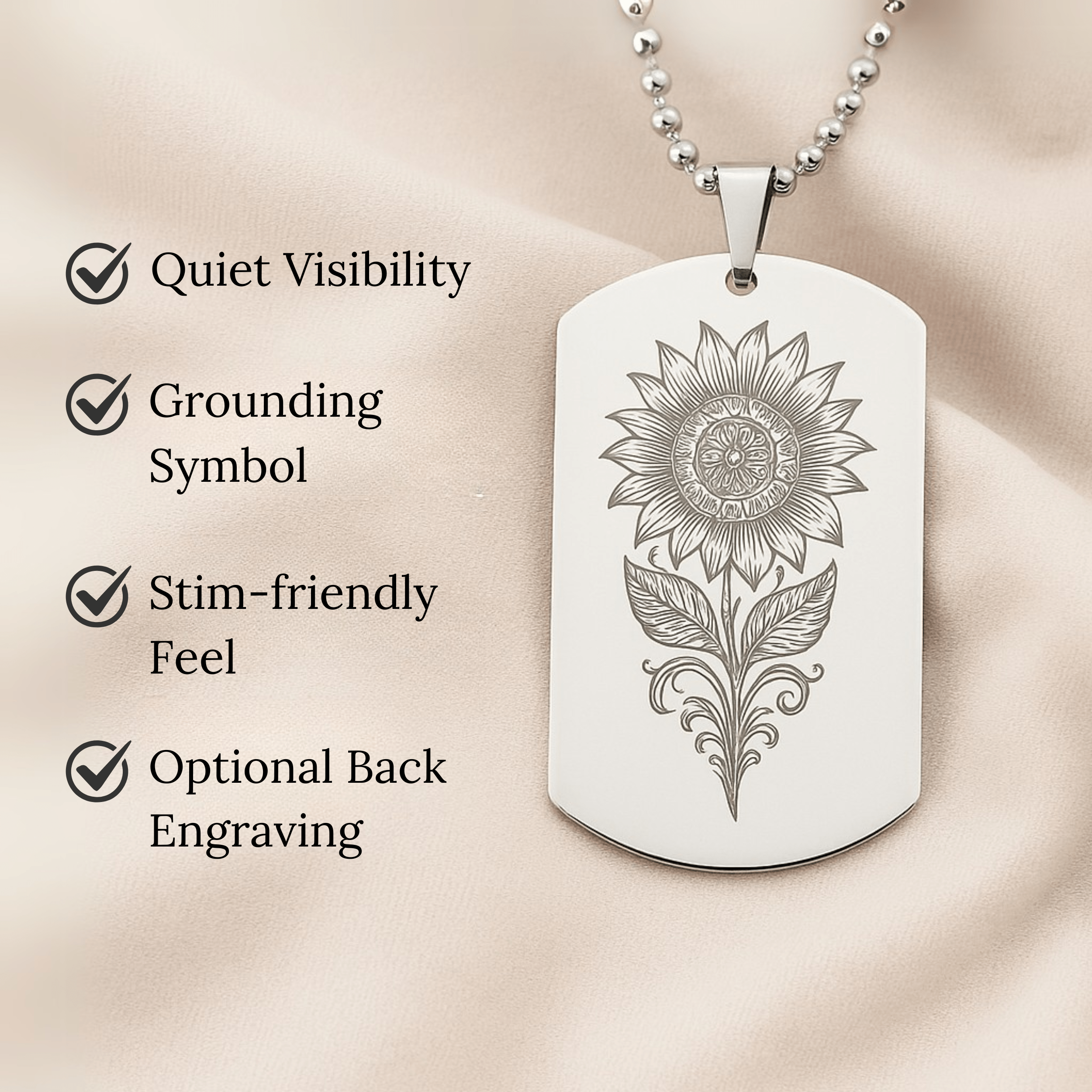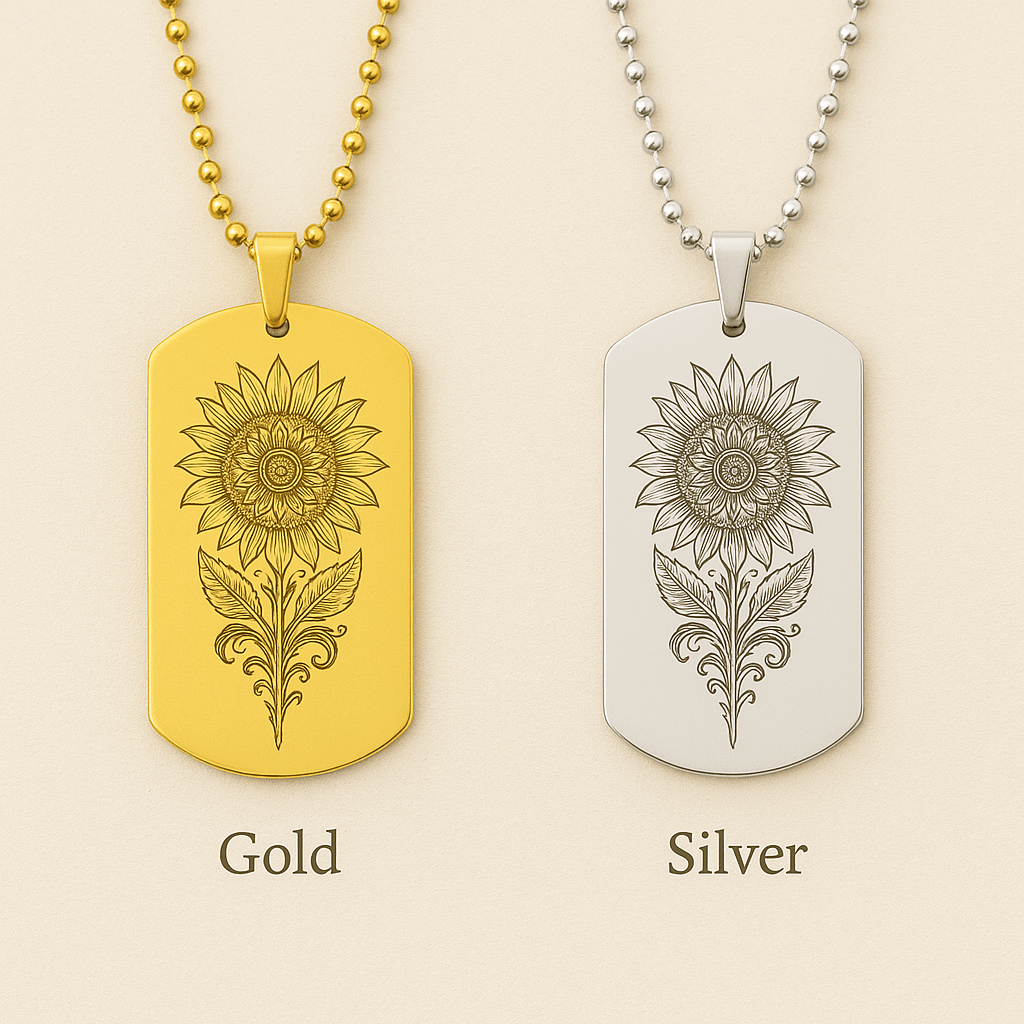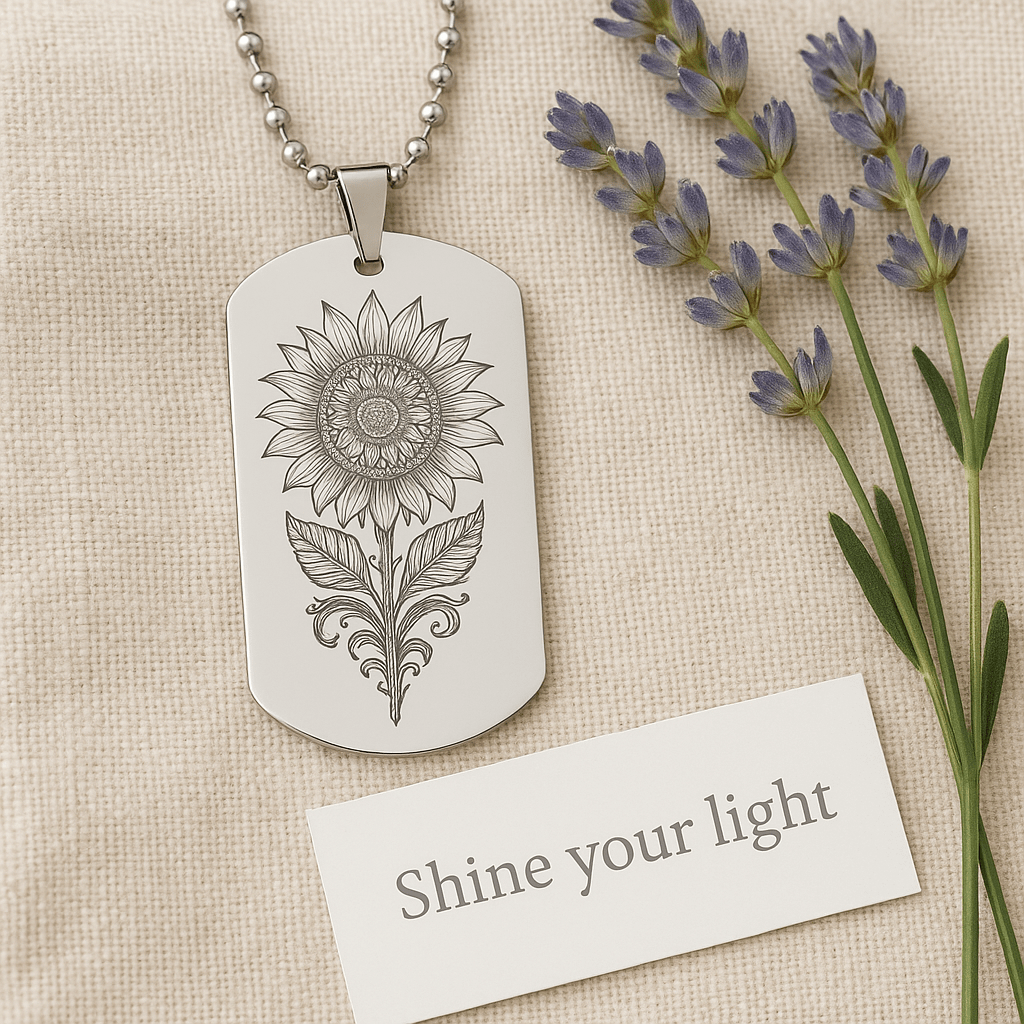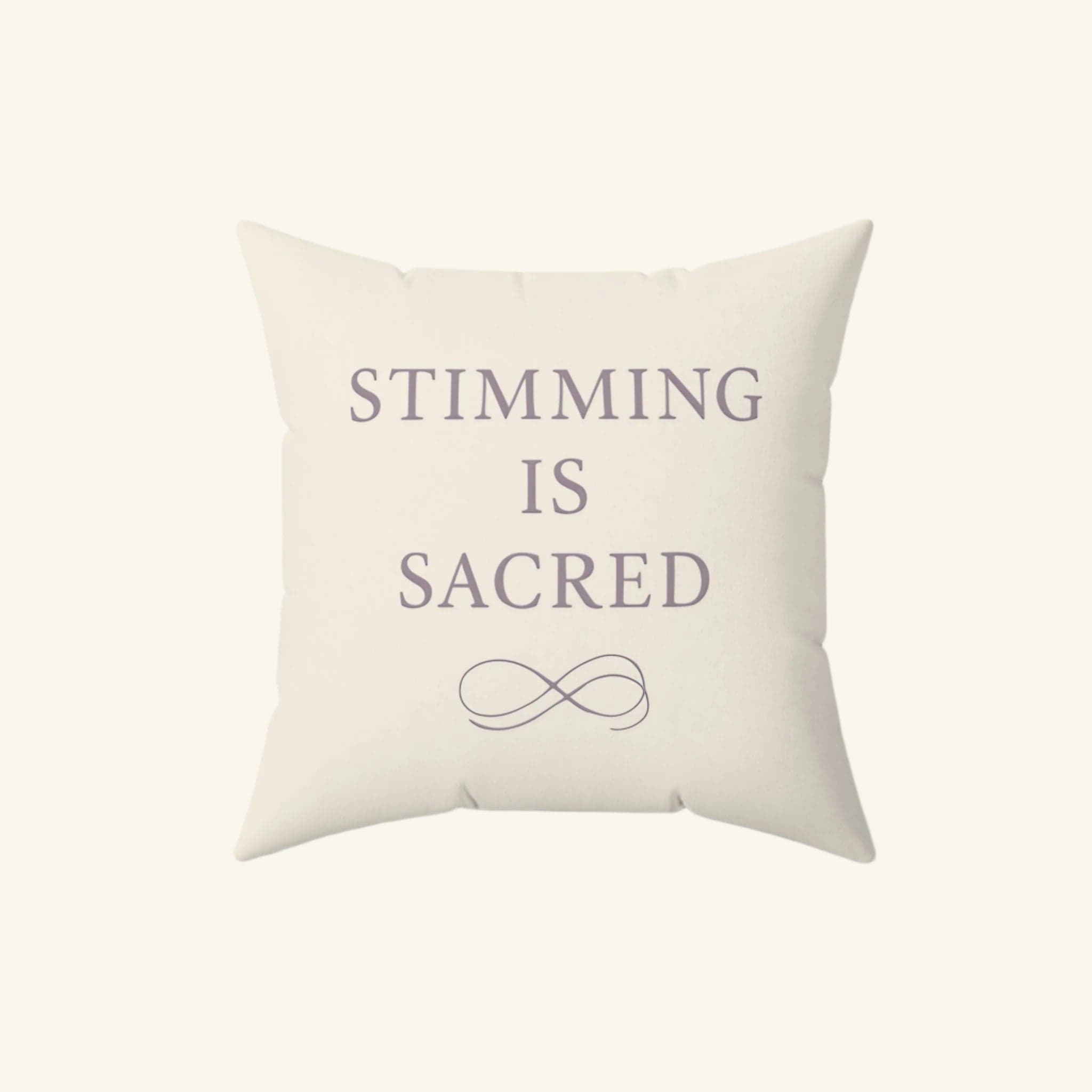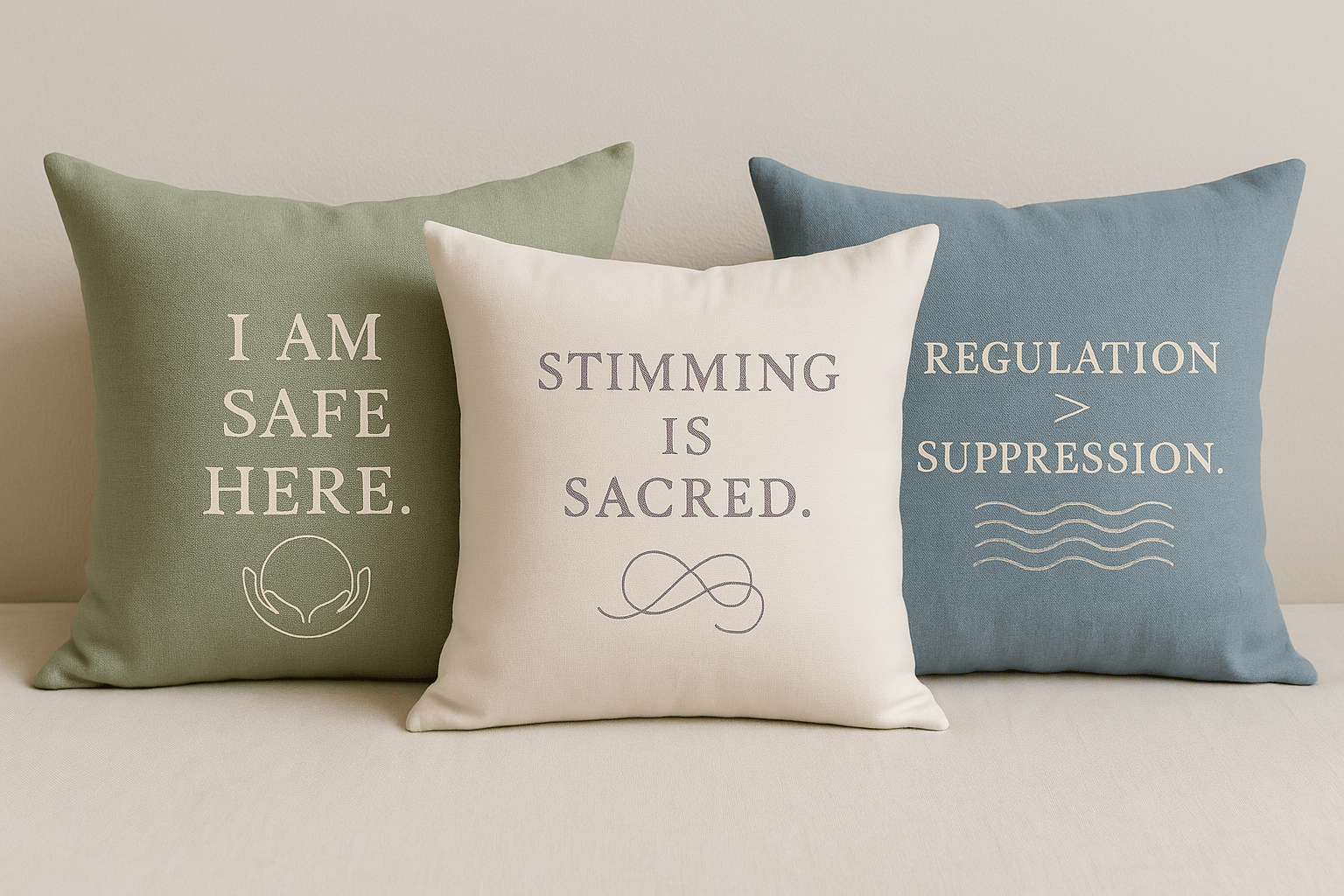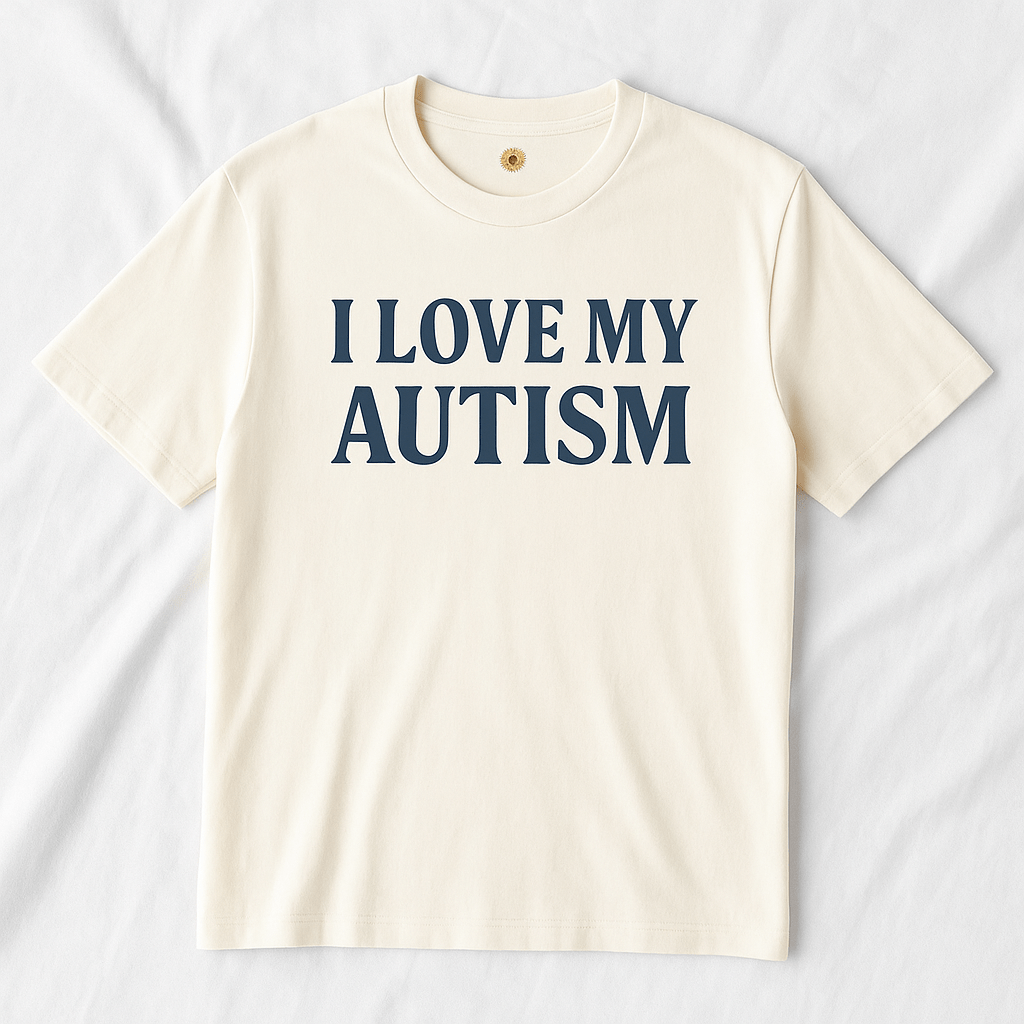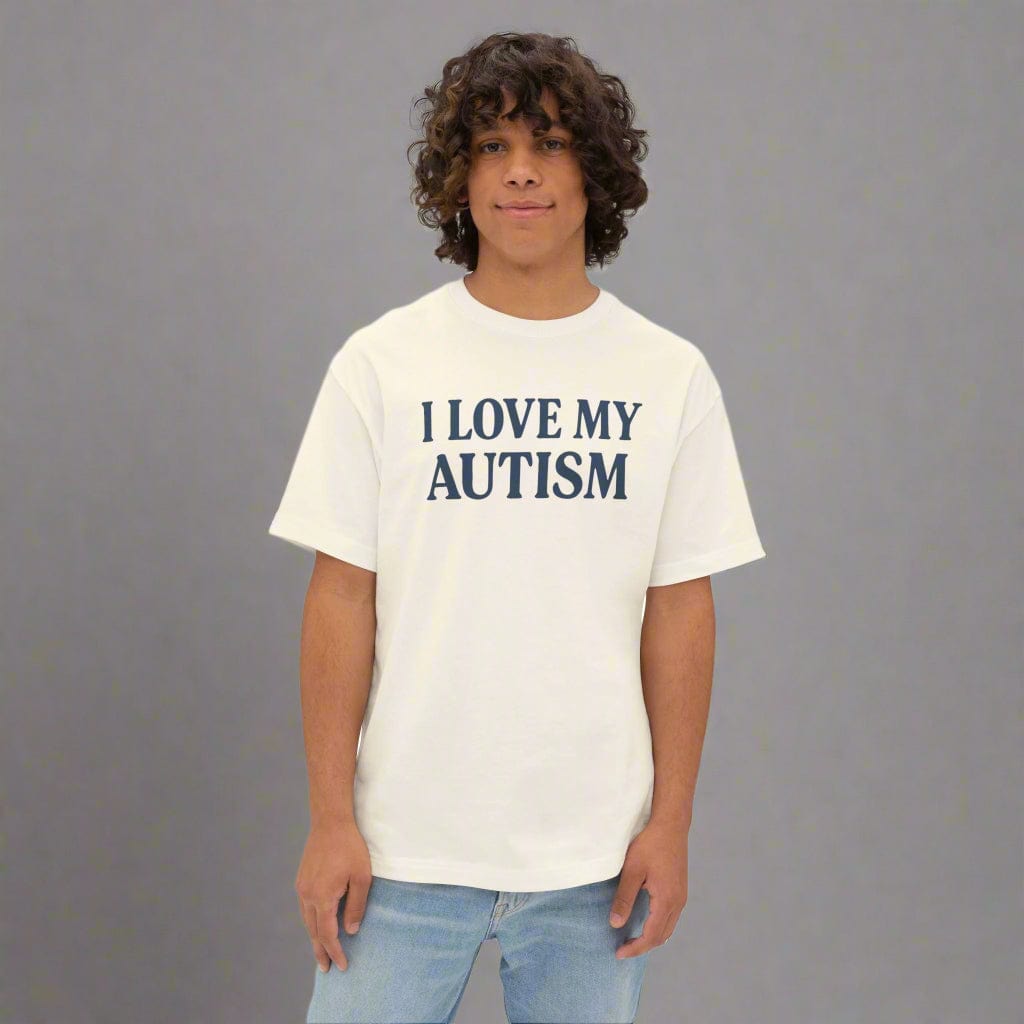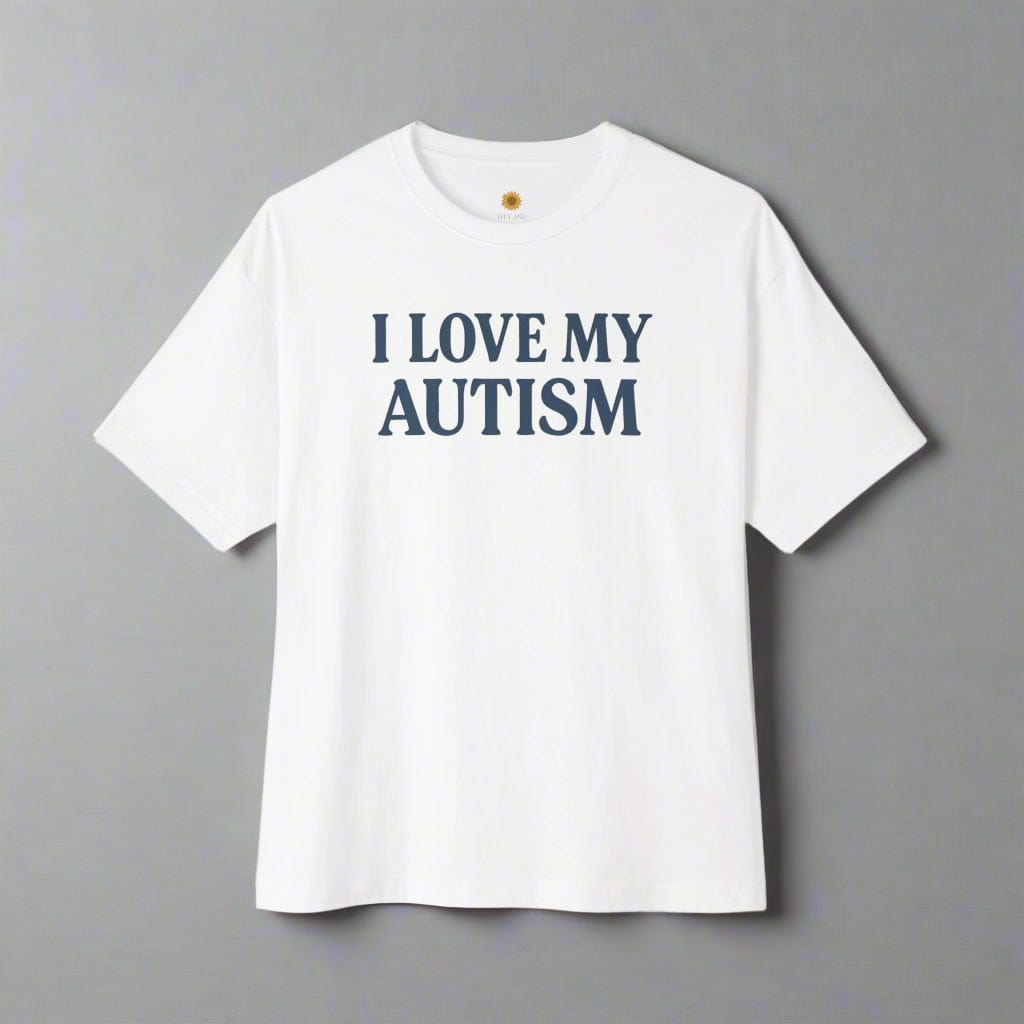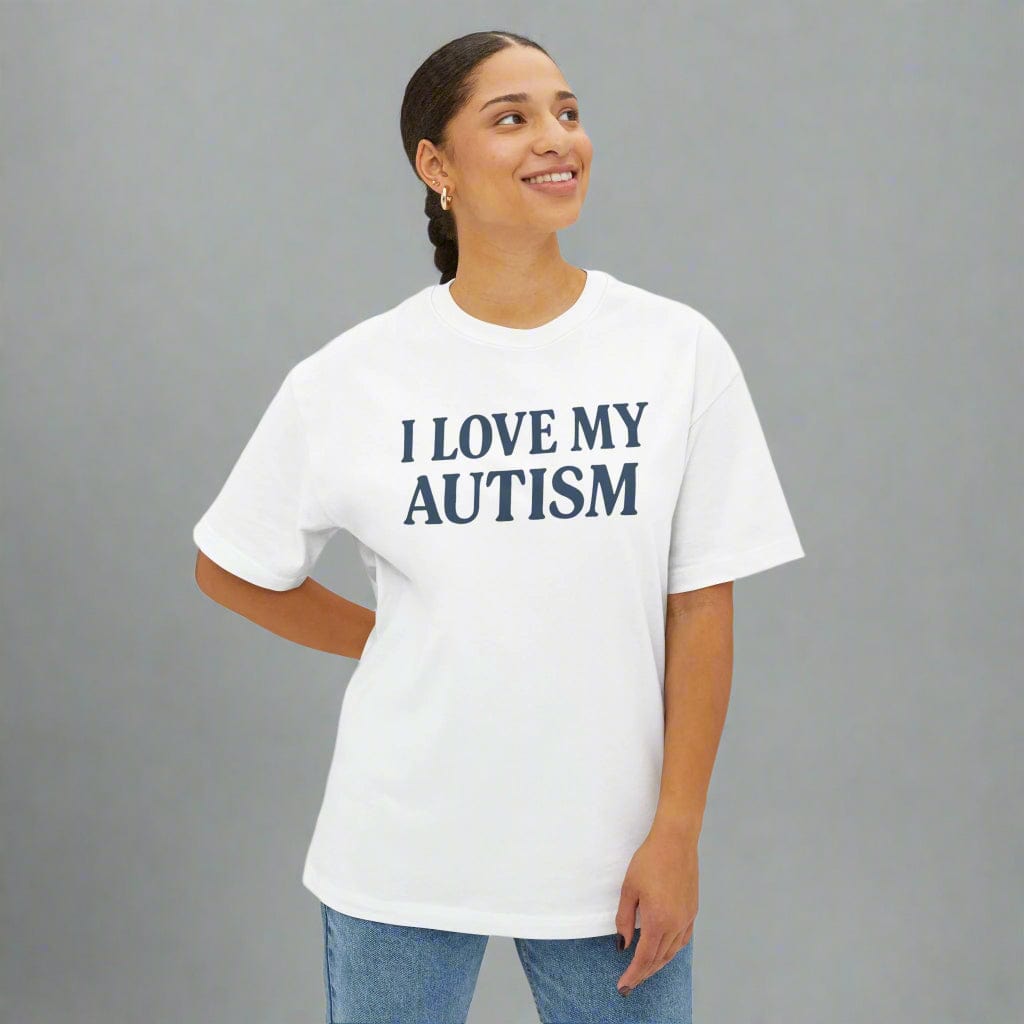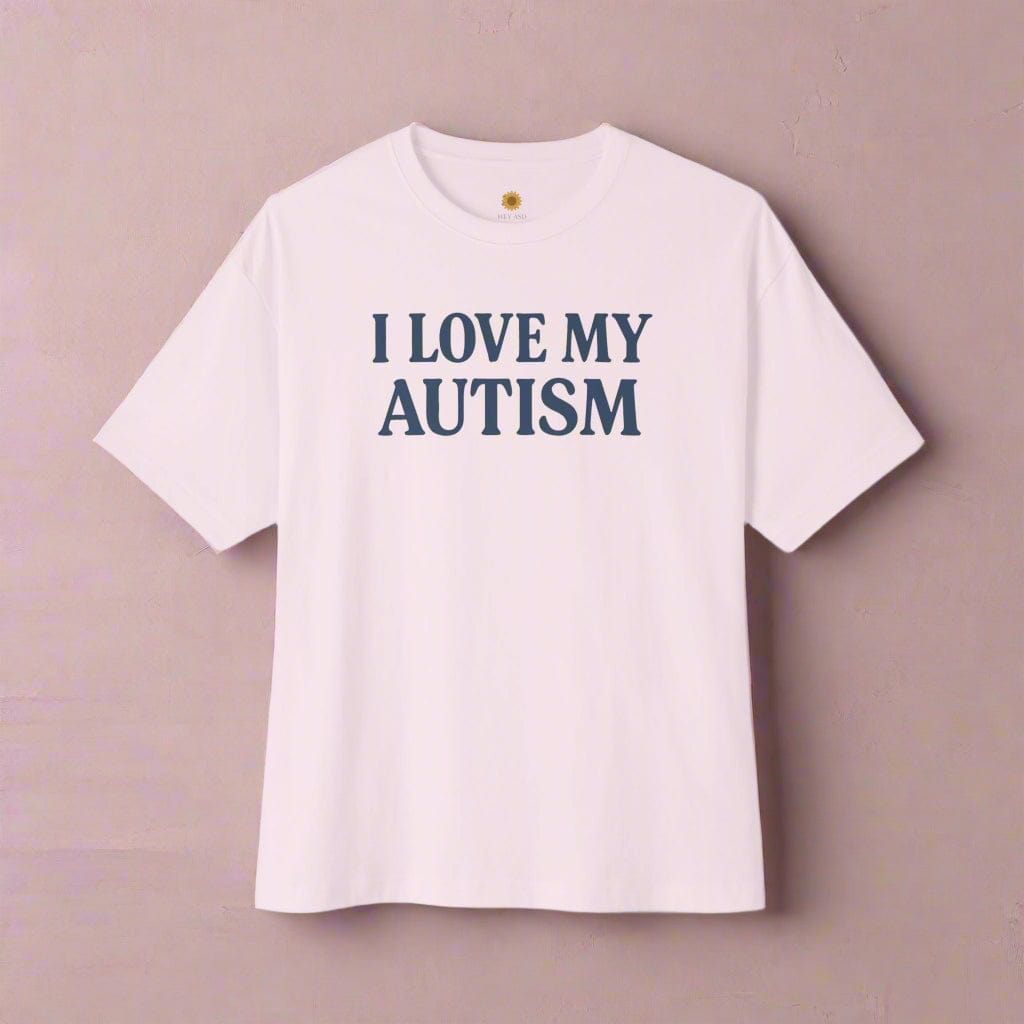Sensory Issues in Adults With Autism: Symptoms & How to Manage
Sensory issues are a core part of the autistic experience, but often misunderstood. This guide explores common triggers, calming tools, and how to feel more at peace in your day-to-day life.

Written by the HeyASD Editorial Team
If you’re an autistic adult, you may already know that the world can feel too loud, too bright, or just… too much. These intense sensory experiences are not just in your head; they are a real and valid part of being autistic. Your brain simply processes sensory information differently. This article explores the common types of sensory issues you might face, from specific textures, sounds, lights, and smells to the overwhelm that follows. We will also cover supportive ways to cope. You are not broken. This is a safe place to explore what sensory comfort can mean for you.
What Are Sensory Issues in Autistic Adults?
For many autistic adults, sensory issues are a core part of their daily experience. It’s not a personal failing or being “too sensitive”—it’s a difference in neurology. Your brain may amplify or dull down sensory information, leading to unique sensory challenges. This is a fundamental aspect of the autism spectrum that shapes how you interact with your environment.
Understanding these differences is the first step toward finding comfort and control. This involves recognizing two main types of sensory responses: being overly sensitive to input and being under-sensitive to it. The following sections will look at these concepts more closely, explore the wide spectrum of experiences, and validate why what you feel is real.
Defining Sensory Sensitivity and Under-Sensitivity
Sensory sensitivity, or hypersensitivity, happens when your nervous system goes into high alert from sensory input. You might notice every flicker of a fluorescent lightbulb, find the hum of a refrigerator unbearable, or feel physical discomfort from a tag on your shirt. It’s as if the volume of the world is turned all the way up, and your brain struggles to filter out the noise. This is a common part of the autistic experience.
On the other hand, under-sensitivity, or hyposensitivity, is when you need more intense sensory input to register it. You might feel calm only when music is turned up loud, seek out deep pressure through tight hugs or weighted sensory blankets, or not notice pain or temperature changes that others would find extreme. It’s not that you don’t feel things; your brain just requires a stronger signal.
Many autistic people experience a mix of both. You might be hypersensitive to sounds but hyposensitive to touch, creating a complex and personal sensory profile. Recognizing where you fall on this spectrum for each sense is key to understanding your needs.
The Spectrum of Autistic Sensory Experiences
There is no one-size-fits-all autistic sensory experience. Your sensory profile is entirely unique to you, which is why the autism spectrum is so diverse. Research shows that while some autistic adults primarily experience hypersensitivity, many others experience a combination of hyperreactivity, hyporeactivity, and sensory seeking behaviors. For example, a 2021 study in the Journal of Autism and Developmental Disorders found that co-occurring sensory seeking and hypersensitivity was the most common profile among participants.
This means you might despise the feeling of a scratchy sweater (hypersensitivity) but actively seek the deep pressure of a tight autism hoodie (sensory seeking). You could be overwhelmed by the chatter of people in a cafe but find the focused sound of your favorite music through headphones to be incredibly calming.
These unique challenges and preferences are not contradictory; they are part of a complex sensory world. Understanding your personal patterns—what you avoid, what you crave, and what feels neutral—is a journey of self-discovery that is essential for your well-being.
Why These Experiences Are Valid — Not Imagined
For years, you may have been told you’re being dramatic, picky, or "too sensitive." It’s crucial to understand that your sensory experiences are a valid result of your neurological condition, not a character flaw. Many late-diagnosed autismadults, in particular, spend their lives trying to suppress or ignore their sensory distress, leading to exhaustion and shame.
When you describe a sound as physically painful or a light as blinding, you are describing a real perception. Your brain isn’t “imagining” the intensity; it’s genuinely processing the sensory environment differently. According to Dr. Megan Anna Neff, a clinical psychologist, discovering this in adulthood can unlock a new level of self-understanding after years of struggling without this knowledge.
Your sensory needs are not an inconvenience; they are a fundamental part of who you are. Acknowledging their validity is the first step toward giving yourself permission to seek comfort, set boundaries, and build a life that honors your sensory system instead of fighting against it.
Understanding Hypersensitivity vs. Hyposensitivity
The terms hypersensitivity and hyposensitivity describe opposite ends of the sensory processing spectrum. Both relate to how your unique sensory systems engage with the world. Grasping the difference is key to identifying your triggers and finding effective ways to achieve sensory regulation. Hypersensitivity means you are over-responsive to stimuli, while hyposensitivity means you are under-responsive.
An individual's sensory profile is rarely just one or the other. It’s common to be hypersensitive in some areas and hyposensitive in others. Let’s explore the specific signs of each to help you better understand your own sensory responses.
Signs of Hypersensitivity in Adults
Hypersensitivity is an intense reaction to sensory input that others might not even notice. It can cause physical discomfort, anxiety, and a feeling of being completely overwhelmed. This state of high alert can make everyday environments feel like an assault on your senses. Do any of these experiences sound familiar to you?
Many autistic adults report that this over-responsiveness is one of their biggest daily challenges. The constant barrage of stimuli can be draining and lead to a need to withdraw.
Common signs of hypersensitivity include:
-
Auditory: Finding background noise distracting or unbearable, being easily startled by loud noises, or feeling pain from high-pitched sounds.
-
Visual: Discomfort from bright lights,
fluorescent lighting, or screen glare; feeling overwhelmed by visually cluttered spaces. -
Tactile: Aversion to certain clothing fabrics, seams, or tags; finding light or unexpected touch distressing.
-
Olfactory/Gustatory: Feeling nauseated by strong smells like perfume or cleaning products; having a restricted diet due to sensitivities to food textures or tastes.
Signs of Hyposensitivity in Adults
Hyposensitivity, or under-sensitivity, occurs when your brain needs a higher level of sensory input to register a sensation. If you are hyposensitive, you might not notice things that others find intense or painful. This can lead to sensory-seeking behaviors as you subconsciously try to get the input your nervous system craves.
This need for more stimulation is not a choice; it's how your body achieves equilibrium. For many, it can be just as impactful as hypersensitivity, though it may be less understood by others.
Signs of hyposensitivity can include:
-
Proprioceptive/Vestibular: A constant need for movement, such as fidgeting, pacing, or rocking (
stimming); enjoying activities with intense motion or deep pressure. -
Tactile: A high tolerance for pain or extreme temperatures; not noticing when you are hurt or when food is too hot.
-
Gustatory: A preference for very spicy, sour, or intensely flavored foods.
-
Auditory: Not responding to your name being called when focused on something else; a need for loud music or television to concentrate.
Fluidity and Change in Sensory Responses
Your sensory responses are not set in stone. One of the most important things to understand about your sensory profile is that it can be fluid and change from day to day, or even hour to hour. Your tolerance for sensory input is often moderated by your mood, stress levels, and overall energy.
For instance, on a day when you are well-rested and relaxed, you might be able to tolerate the noise and crowds of a grocery store. However, as Dr. Neff notes, "When under stress I am hyperreactive to sound." On a day when you are tired or stressed, that same environment can feel completely overwhelming and trigger a shutdown.
This is not inconsistency; it is a normal part of the autistic experience. Recognizing that your sensory needs can change allows you to be more compassionate with yourself. It gives you permission to adjust your plans, use coping mechanisms, or ask for support based on how you are feeling in the moment, improving your overall quality of life.
Common Sensory Triggers for Autistic Adults
Sensory triggers are specific inputs from the environment that cause a negative or overwhelming reaction. For autistic adults, these triggers can be found in everyday situations, turning a simple trip to the office or a cafe into a draining experience. Identifying your personal sensory triggers is a powerful act of self-advocacy and the first step toward managing sensory challenges.
These triggers are not universal; what one person finds unbearable, another may not notice. They can exist across all senses, from the sound of a ticking clock to the texture of a certain food. Let’s explore some of the most common triggers you might encounter.
Auditory Triggers: Everyday Sounds and Noises
Auditory sensitivity autism is one of the most frequently discussed sensory challenges. The world is filled with complex soundscapes, and for a hypersensitive person, it can be chaotic and painful. It's not just about volume; the quality, pitch, and unpredictability of a sound can all be triggering.
Many autistic adults find it difficult to filter out background noise, making it hard to focus on a single conversation. Noisy environments like restaurants, with the chatter of people and clinking dishes, can quickly lead to sensory overload.
Common auditory triggers include:
-
Loud and unexpected sounds (sirens, alarms, dogs barking)
-
Busy auditory environments (shopping malls,
family gatherings) -
Multiple conversations happening at once
-
High-pitched noises (whistles, microphone feedback)
-
Repetitive sounds (a dripping faucet, pen clicking)
Visual Triggers: Bright Lights and Visual Clutter
The visual world can be just as overwhelming as the auditory one. Visual stimuli like harsh lighting or busy patterns can be disorienting and even physically painful for autistic adults with hypersensitivity. Many workplaces and public spaces are filled with visual triggers that contribute to daily sensory strain.
Fluorescent lights, which are common in offices and stores, are a frequent culprit. Their flickering, though often invisible to the neurotypical eye, can be highly distracting and cause headaches or anxiety. Similarly, environments with a lot of visual clutter can make it difficult for your brain to process what it’s seeing.
Key visual triggers often include:
-
Bright, direct sunlight or harsh artificial lights
-
Fluorescent lightsthat flicker or hum -
Visually cluttered spaces with too many objects or patterns
-
Flashing or moving lights and digital screen glare
Tactility: Textures, Clothing, and Physical Touch
Your sense of touch provides constant tactile input, and for many autistic adults, this can be a source of both distress and comfort. Hypersensitivity to touch can make everyday things like getting dressed or being hugged feel uncomfortable or even painful.
Clothing is a major factor. The texture of a fabric, the placement of a seam, or the presence of a tag can be unbearable. This is why finding sensory-safe clothing, like soft cotton autism t-shirts without tags, can be life-changing. Unexpected physical touch from others can also be very jarring, triggering a fight-or-flight response.
Common tactile triggers include:
-
Light or unexpected touch from other people
-
Scratchy or rough clothing fabrics, seams, and labels
-
Certain textures, like wet, greasy, or sticky substances
-
Restrictive or tight-fitting clothes (for some)
Smells and Chemical Sensitivities
The sense of smell is strongly linked to memory and emotion, and for autistic adults, it can also be a powerful sensory trigger. A heightened sensitivity to smells can make navigating crowded places or using common household products a challenge. Strong odors can be distracting, nauseating, and utterly overwhelming.
Chemical sensitivities are also common. The artificial fragrances in perfumes, air fresheners, and cleaning supplies can feel invasive and trigger headaches or breathing difficulties. Even natural smells that others find pleasant can be too intense in a sensory environment already filled with input.
Frequent triggers related to smell are:
-
Strong perfumes, colognes, or scented lotions
-
Chemical smells from cleaning products or air fresheners
-
Food odors, especially in confined spaces
-
Pollution or cigarette smoke
Taste and Texture Challenges in Food
For many autistic adults, challenges with food are less about the flavor and more about taste sensitivity and texture. The sensory experience of eating can be so intense that it leads to a highly selective or restricted diet. This is not "picky eating"; it's a genuine response to overwhelming sensory sensitivities.
Unpredictable textures are often a major issue. A food that is sometimes crunchy and sometimes soft can cause anxiety. The feeling of mixed textures in one bite, like in a stew or a salad, can also be difficult to process. These sensory profiles around food are deeply personal and can change over time.
Common triggers include:
-
Specific
food textures(slimy, mushy, or gritty) -
Unexpected textures (a hard bit in a soft food)
-
Foods where different textures are mixed together
-
Very strong or bitter flavors
Movement and Balance: Navigating the Physical World
Sensory needs related to movement and balance (the vestibular and proprioceptive senses) are also a key part of the autistic experience. These senses tell you where your body is in space and can affect everything from your coordination to your need for physical stimulation.
Some autistic adults may experience motion sickness easily or feel disoriented in crowds. Others may be hyposensitive and crave intense movement to feel regulated. This can manifest as a need to fidget, pace, rock, or engage in stimmingto get the sensory input their body requires. This physical self-regulation is a crucial coping mechanism.
Common experiences related to movement and balance include:
-
Feeling dizzy or off-balance in moving vehicles or crowds
-
A strong need to move or fidget to stay focused
-
Clumsiness or difficulty with coordination
-
Seeking deep pressure or tight hugs to feel grounded
Sensory Processing Issues and Daily Life
Sensory processing issues are not an abstract concept; they have a profound impact on nearly all aspects of life. The constant effort to navigate a world not built for your sensory needs can affect your work, your relationships, and your mental health. It can influence your ability to leave the house, connect with others, and simply feel at ease in your own skin.
Understanding this connection is vital for developing self-compassion and finding strategies that improve your quality of life. The challenges are real, but so are the solutions. The following sections explore how these sensory differences show up in different areas of your life.
Managing at Work, School, and Public Places
Work environments, schools, and other public places are often filled with sensory triggers. Open-plan offices with constant background noise, bright fluorescent lights, and frequent interruptions can make it nearly impossible to concentrate. Simple errands, like a trip to the grocery stores, can turn into a draining ordeal of overwhelming sights, sounds, and smells.
Many autistic adults develop complex coping strategies to survive in these spaces, such as wearing sunglasses indoors or finding a quiet corner to decompress. However, this constant management of sensory input is exhausting and can leave little energy for the actual tasks you need to accomplish.
Advocating for sensory supports—like permission to wear headphones, control over lighting, or a flexible work-from-home schedule—can make a significant difference. Creating a more predictable and less demanding sensory environment allows you to conserve your energy and thrive, rather than just survive.
Relationships and Communication
Sensory needs deeply influence social interactions and relationships. For example, you might find social communication at a loud party or a busy family gathering impossible because you can't filter out the background noise to focus on a conversation. Or you may need to avoid physical touch, like hugs from well-meaning relatives, because it feels invasive and overwhelming.
These needs can sometimes be misinterpreted by others as being aloof, uninterested, or rude. This is why communicating your boundaries is so important. Explaining to a friend, "I'd love to see you, but can we meet somewhere quiet?" is an act of both self-care and relationship care. It helps autistic people connect in ways that feel safe and sustainable.
When loved ones understand your sensory world, they can become a source of support rather than another source of stress. They can help you navigate challenging environments and respect your need for downtime to recharge.
The Emotional Toll—Exhaustion, Shame, and Misjudgment
Living with constant sensory overwhelm takes a significant emotional toll. The relentless effort of processing a chaotic world can lead to profound exhaustion and impact your mental health. Many autistic adults spend years thinking they are "just sensitive" or that something is wrong with them, leading to feelings of shame and inadequacy.
This is often compounded by being misjudged by others. When you have a shutdown or need to leave a social event early, people who don't understand your sensory reality might see it as a choice rather than a necessity. These emotional responses can lead to social withdrawal as you try to protect yourself from both sensory pain and judgment.
It’s important to remember that it’s not a flaw. Your brain is working overtime to manage input that others filter out effortlessly. Giving yourself grace and understanding that your need for rest is valid is a powerful step toward healing from this emotional toll.
Sensory Overload and Autistic Burnout
When your brain receives too much sensory information and can no longer process it effectively, you experience sensory overload. It's a state of intense overwhelm that can cause anxiety, irritability, and a desperate need to escape. While a single instance of overload is draining, repeated and chronic exposure can lead to a more severe state: autistic burnout.
Autistic burnout is a state of profound physical, mental, and emotional exhaustion. Understanding the link between daily sensory strain and long-term burnout is crucial for prevention and recovery. Let's look at the signs of overload and how it can escalate.
Early Warning Signs and Symptoms
Recognizing the early warning signs of sensory overload can help you intervene before you reach a breaking point. These signs are your body's way of telling you that your nervous system is becoming overwhelmed. A systematic review of autistic experiences shows these symptoms are common.
These symptoms can be physical, emotional, and cognitive. You might feel your muscles tense up, become unusually irritable, or find it hard to think clearly. Paying attention to these subtle shifts allows you to remove yourself from a triggering situation or use a coping tool before a full shutdown occurs.
Common warning signs include:
-
Increased irritability or anxiety
-
Difficulty concentrating or focusing
-
Feeling physically tense or restless
-
A desire to withdraw or flee the environment
Here’s how immediate sensory overload can differ from long-term autistic burnout:
|
Sensory Overload (Immediate Response) |
Autistic Burnout (Long-Term State) |
|---|---|
|
Intense anxiety or feeling overwhelmed |
Chronic and pervasive exhaustion |
|
Irritability and frustration |
Loss of skills (e.g., social, executive function) |
|
Need to escape or withdraw from a situation |
Increased sensory sensitivity to all stimuli |
|
Physical discomfort like headaches or nausea |
Pervasive apathy, depression, or social withdrawal |
How Repeated Overwhelm Leads to Burnout
Autistic burnout doesn’t happen overnight. It is the cumulative effect of pushing through constant sensory overwhelm and stress without enough time to recover. Think of your sensory tolerance as a battery. Every overwhelming experience drains it a little. If you don't have enough time or the right coping strategies to recharge, you eventually run out of power completely.
This creates a vicious cycle. As your nervous system becomes more depleted from processing too much sensory information, your tolerance for sensory input decreases. This makes you even more susceptible to overload, which drains your battery further. Over time, this chronic state of depletion can lead to a complete shutdown of your abilities.
Recovery from autistic burnout requires radical rest and a significant reduction in sensory and social demands. This is why preventing it by managing daily sensory overwhelm is so critical. It’s about learning to protect your energy before it’s gone.
Zoning Out, Fatigue, and Irritability
Zoning out, or dissociation, is a common response to sensory overload. When your brain can no longer handle the incoming stimuli, it may start to disconnect as a protective mechanism. You might feel foggy, numb, or as if you’re watching yourself from a distance. While this can provide temporary relief, it’s a sign that your system is at its limit.
Fatigue and irritability are also hallmark signs of sensory strain. The constant mental effort required to filter sensory input is incredibly draining, leading to a bone-deep exhaustion that sleep doesn't always fix. This exhaustion, combined with the discomfort of being overstimulated, naturally leads to increased irritability.
These symptoms seriously impact your quality of life and are signals to take action:
-
Zoning Out: A sign of shutdown, where your brain disengages to protect itself.
-
Fatigue: Chronic exhaustion from the constant work of sensory processing.
-
Irritability: A common emotional response to feeling overwhelmed and uncomfortable.
Coping Strategies for Sensory Comfort
While you can't change your neurology, you can develop coping strategies to create more sensory comfort in your life. It's about learning to work with your sensory system instead of against it. This involves modifying your sensory environment, using tools to buffer input, and advocating for your needs. An occupational therapy professional can sometimes help with this.
You deserve to feel comfortable and safe. Adopting these strategies isn't about being difficult; it's about giving your nervous system the support it needs to function well. Let's explore some practical ways to build a more sensory-friendly life.
Creating Sensory-Friendly Spaces at Home
Your home environment should be a sanctuary—a place where you can rest and recharge your sensory system. Creating sensory-friendly spaces is one of the most powerful ways to support your well-being. This might involve setting up a "calm corner" or making small adjustments throughout your home.
An occupational therapist might suggest a sensory diet, but you can start on your own by identifying what feels calming to you. Think about lighting, sound, textures, and clutter. The goal is to reduce triggering input and increase soothing input, allowing for better sensory regulation.
Here are some ideas to get started:
-
Lighting: Use dimmer switches, warm-toned bulbs, or lamps instead of harsh overhead lights. Blackout curtains can create a dark, restful space.
-
Sound: Place rugs or carpets to dampen echo. Unplug electronics that hum. Create a quiet zone where no music or TV is allowed.
-
Clutter: A tidy, organized space reduces visual overwhelm. Use storage bins to keep things out of sight.
-
Comfort: Fill the space with textures you love, like a soft autism prid
eblanket or a comfortable chair.
Tools: Headphones, Sunglasses, & Sensory-Safe Clothing
Having the right sensory tools can make a world of difference when you need to navigate overwhelming environments. These tools act as a buffer, allowing you to turn down the volume of the world so you can function with less stress. Building a portable sensory toolkit means you’re always prepared.
Sensory-safe clothing is a great place to start. A soft autism hat can block overhead lights, while a comfortable hoodie can provide a sense of enclosure. Noise-canceling headphones are essential for many autistic adults, creating a bubble of peace in loud places.
Consider adding these to your toolkit:
-
Noise-canceling headphones or earplugs
-
Sunglassesto wear indoors or on overcast days -
A comfortable, tagless autism jewelr
ypiece or fidget toy to provide calming tactile input -
A weighted lap pad or scarf for
deep pressure -
A favorite scent on a handkerchief to block out bad smells
Setting and Communicating Sensory Boundaries
Perhaps the most powerful coping strategy of all is learning how to set and communicate your sensory boundaries. This is an act of self-advocacy that is crucial for protecting your energy and improving your relationships. It involves knowing your limits and clearly telling others what you need.
This can feel difficult, especially if you’ve spent your life masking your discomfort. But stating your needs directly is often kinder and clearer than suffering in silence until you reach a breaking point. For example, you could say, "I need to leave the party now, it's getting too loud for me," or "I'm not a big hugger, but I'd love to chat."
Communicating your boundaries helps others understand your autism experience and gives them the opportunity to support you. It empowers you to participate in social interactions on your own terms, creating connections that are authentic and sustainable. You don’t have to justify your needs to belong. The right community will respect them.
Join Hundreds of Autistic Adults Feeling
More Comfort in Their Own Skin
Use code WELCOME10 for 10% off your first order.
Start Your Comfort JourneyConclusion
Navigating sensory issues as an autistic adult can feel overwhelming, but it’s essential to remember that you are not alone in this experience. Understanding the nuances of sensory processing, including hypersensitivity and hyposensitivity, can empower you to develop coping strategies that provide relief and comfort. Creating a sensory-friendly environment and learning to set boundaries are crucial steps in managing your sensory needs. As you explore these strategies, know that your experiences are valid, and seeking support is a sign of strength. If this article resonated with you, check out our guide to creating a sensory-friendly home or explore our sensory-safe t-shirts. Every product we create is made by and for the autistic community — with comfort in mind.
Frequently Asked Questions
Can sensory issues in autistic adults affect mental health?
Yes, absolutely. The constant stress of managing sensory processing differences is a significant contributor to anxiety, depression, and autistic burnout in autistic adults. The exhaustion and misjudgment associated with sensory challenges can take a heavy toll on mental health and emotional well-being over the course of daily life.
How do sensory sensitivities differ between autistic adults and children?
While the underlying sensory sensitivities can be similar, autistic adults often have more developed—and exhausting—masking and coping strategies. Adults also navigate different environments like workplaces. An adult's quality of life can be heavily impacted by a lifetime of managing these sensitivities across a wide range of social and professional demands.
What’s the difference between sensory processing disorder and sensory issues in autism?
Sensory differences are a core diagnostic feature of autism spectrum conditions. Sensory Processing Disorder (SPD) is a separate diagnosis, but the symptoms overlap almost completely. Many autistic people experience sensory challenges that meet the diagnostic criteria for SPD, so the terms are often used to describe the same sensory processing experiences.
What’s the difference between sensory processing disorder and sensory issues in autism?
Unusual responses to sensory input are part of the diagnostic criteria for autism spectrum conditions. While Sensory Processing Disorder (SPD) exists as its own condition, the sensory challenges are fundamentally intertwined with the autistic experience. Most autistic people have sensory processing differences, making the distinction largely clinical.
How do sensory sensitivities differ between autistic adults and children?)
Sensory sensitivities in autistic adults often manifest as heightened awareness and emotional responses to stimuli, while children may exhibit more observable reactions like meltdowns. Adults might develop coping strategies, leading to varying experiences compared to their childhood responses. Understanding these differences is crucial for support.
On This Page
Frequently asked questions
What are common sensory issues in autistic adults, and how might they affect daily life?
How can I recognize signs of sensory overload and manage sensory overload autism effectively?
What coping strategies can help with autism sensory problems in everyday situations?
How can creating a sensory-friendly living environment autism support my comfort and well-being?
Are there sensory-friendly products, like calming blankets or Autism-themed decor, that can help reduce sensory sensitivities?
How can self-regulation techniques like mindfulness or deep breathing assist in managing sensory issues?
What role does social support and communication play in disability support for sensory sensitivities?
How can occupational therapy contribute to managing sensory issues in autistic adults?
Can sensory tools or sensory-friendly clothing, such as soft t-shirts, make a difference in coping with sensory sensitivities?

About the HeyASD Editorial Team
Autistic‑owned • Values‑led • Sensory‑friendly design
We are autistic creators, writers, and advocates dedicated to producing resources that are practical, sensory-aware, and grounded in lived experience. Our mission is to make information and products that support the autistic community accessible to everyone, without jargon or condescension. Learn more about our team.
This article is written from lived autistic experience and an evidence-aware perspective. It is for general informational purposes only and should not be taken as medical, legal or therapeutic advice.
Always consult a qualified clinician or occupational therapist for individual needs and circumstances.

About Our Autism Blog
HeyASD isn’t just a store, it’s a calm, supportive space created by and for autistic adults. Our blog shares sensory-friendly tips, identity-affirming stories, and heartfelt resources for navigating life as an autistic person. Whether you're late-diagnosed, exploring your needs, or supporting someone you love, you're welcome here.
Thank you for reading. We hope these resources bring comfort and clarity.













